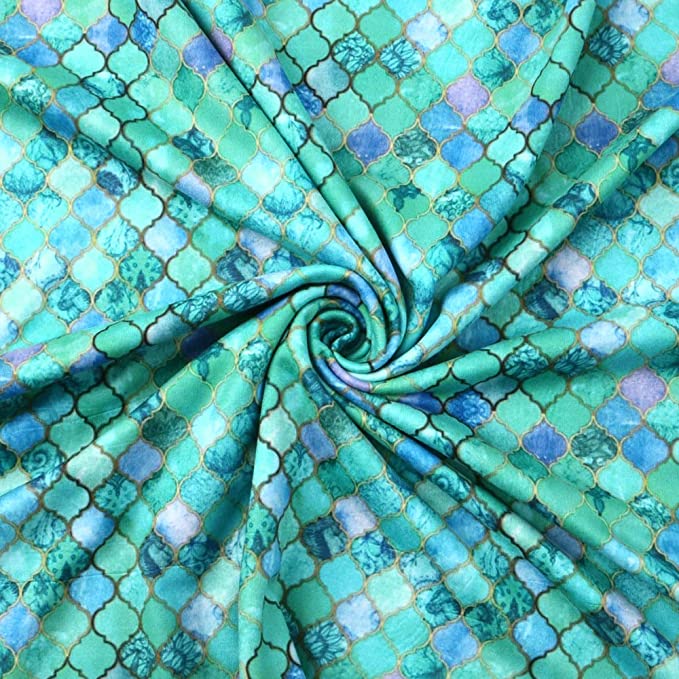As a creator, you recognize the power of a fresh piece of paper. Fabric is identical to a blank sheet of paper. Be it a solid color or a graphic, the ability for fabric in becoming beautiful is what not only attracted everyone to this process in the first place but has us bouncing back for more. Your material consumers would most likely come from the same location too.
Selling fabric printed on demand by the meter is not same as selling manufactured goods. Fabric consumers must understand specifics about the fabric they are purchasing to decide whether it is appropriate for their project. If you’re new to fabric sales, reading this blog will give you a clear idea of what fabric customers will be interested in while shopping.
Fiber Content
Fabrics are constructed from fibers that are entangled to form the fabric foundation. These fibers can be both synthetic and natural. Polyester is the most popular synthetic fiber, and cotton, silk, hemp, and linen are prominent natural fibers. Fabrics may be made entirely of synthetic fibers, entirely of natural fibers, or a combination of both synthetic and natural fibers.
In the expansion of digital printing, we function with either 100% natural or 100% synthetic blends. Our material sites list all of the components of each fabric. Many people who deal with fabrics choose some fibers and formulations over others. Some individuals, for example, can only deal with natural fibers, while others favour polyester’s intrinsic consistency qualities.
Stretchability
Beyond fiber content, the second most readily distinguishable fabric consistency is whether or not it spreads. Knitting is commonly used to create fabric stretch. This procedure is similar to knitting a blanket, albeit on a much smaller scale. The same pattern of loops tied together as a knitted scarf can be seen on your favorite t-shirt. The strength of these bonds to fold is what causes the fabric to expand and shift. Woven fabric is created on a loom with fibers that run perpendicular to one another. Woven loomed textile is not necessarily stretchable, but it can be rendered elastic by using collagen fibers. A knit stretch fabric is used to make your beloved stretch denim trousers.
Fabric Measurements
Fabrics come in a variety of lengths and widths. The width of the fabric is restricted by the looming scale on which it was made. When purchasing cotton, it is sold by the meter which ensures that the width of the fabric divided by the length is given as per request.
The widths seen are the usable widths, which are narrower than the actual fabric width. The selvage refers to the two completed sides of the fabric in the width. The print can not always be based on the width of the fabric. Fabric, unlike paper, can move about on the printing machine as it is being printed.
Fabric Weight
The weight of a fabric is useful for determining how heavy it is. The weight is determined by measuring 1 square meter of the fabric. The weight does not necessarily reflect the thickness of the fabric. Although there is no precise way to quantify drapability, fabrics with low to high drapability, or stiffer fabrics with moderate to high structural stiffness, are discussed.
Printing
For certain designs, it’s essential seeing the print as much as feasible through the fabric. Fabrics like silk and poly chiffon are ideal for bandanas since the design can be seen 75-90 percent of the way through. In the broad sense, the stronger the print through, the finer the thread. Thick fabrics normally do not allow ink to infiltrate beyond the topmost fibers.
Small Print Faults
Small print errors are also acceptable for printed materials. There are a few factors that may contribute to on-demand fabric printing that is inevitable, much like the print drawbacks with finished goods. Any light dust/lint on the fabric board, slight shadowing, and uneven edges are among them.
The fabric is rinsed after printing on it. Exterior fibers can arise from the fabric during this cleaning, resulting in missed spots in the print. If the blemishes are minor and inevitable, the fabric is allowed to be shipped. But it has to be reprinted if they are too intense and destructive.
Base Colours
The variety of white base shades present in fabrics is also extensive. Since various fabrics have unique base colours, the print colour results can vary slightly. One of our main priorities when printing fabric is to maintain as much consistency as possible, but it is common for them to have certain variations in base colours between fabrics, even also within the same material.


